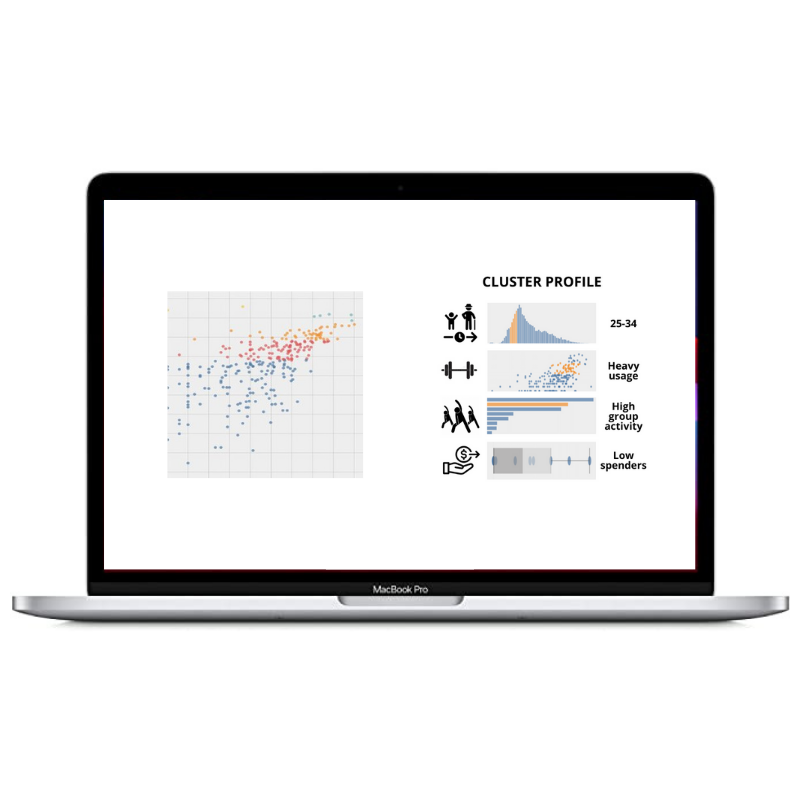26th June 2020
Lock-down measures were a theoretical strategy to contain and flatten the curve and to all extents, they “feel” like they’re working but can we prove it using data?
We have been analysing COVID country data since February and have now combined Google’s mobility data to give us a holistic view of emerging trends.
What do the charts show?
The green mobility (retail & recreation) data shows a comparison to “normal” before COVID, so is anchored to the zero line at the top e.g. the deeper the green line, the more people have stayed away from cafes, shopping centres, movie theatres etc for longer. In the example below, we see the UK’s retail & recreation movement was down at -75% of normal in April and is now still about half of normal right now.
The orange line shows daily cases and our ideal scenario is a bell-shaped curve, tapering off to very small volumes and finally zero (hurrah thought NZ only a week ago…).
Our findings so far
The visualisation shows four countries with vary degrees of “success” in dealing with the COVID outbreak.
Italy was one of the first big casualties but enforced a heavy lockdown, which has only been eased when confirmed cases had reached a much lower volume. The UK is following that trend, now slowly easing things back open but maintaining a 50% reduction in peoples movement.
In contrast, the US mobility trend is very shallow and has almost returned to normal, far too quickly. We can see a relapsed of confirmed cases occurring. This combined with the protests is no doubt going to cause a longevity to the US’ lockdown requirements that their population and economy, does not want.
We have looked into Sweden a few times and again, their laissez-faire attitude to lock-down is still causing issues with rising incremental numbers. We can even see the green mobility line rise above zero, which indicates people are going out to cafes & restaurants more than they were before!
Who needs to learn from this?
There are a number of countries who haven’t reached the peak yet, so the lesson should be to remain with the lock-down strategies for as long as feasibly possible, which is definitely a balancing act.
Our examples below show that this is happening in general, although Russia and India might be relaxing too early.
Data notes
We’ve used a rolling 14 day average (RA) to smooth the trends and remove the spikes.
The daily confirmed cases use an automatic axis, so each country has a different magnitude but we’re interested in the trend.
Google Mobility baseline: 5‑week period Jan 3 to Feb 6, 2020
Google Mobility Retail & Recreation: Restaurants, cafes, shopping centers, theme parks, museums, libraries, and movie theaters.
18th June
We have simplified our daily dashboard to just two views using Power BI.
The first gives a high level but insightful scatter plot by confirmed cases and deaths. Hover over to see detailed country trends.
The second tab provides a detailed view by country.
The last 2.5 months of COVID in 30 seconds
6th May
While global cases smash through 3.5M, Australia is testing a loosening on restrictions. This comes at a time when 1 in 3 paid jobs in the accommodation and food services industry have been lost (mid-March to mid-April), so there is an urgency around getting back to “normal” (stat from ABS).
Australians have seen a very steady and consistently low number of confirmed cases and associated deaths since the beginning (chart below). It is now relaxing the restrictions in different forms throughout its states, which will no doubt cause clusterings of outbreaks.
The UK is still under much tighter restrictions and although the trend is going the right way, the numbers are still consistently high (4k to 6k confirmed and 500 to 1,000 deaths each day). However, this weekend, PM Boris Johnson will set out new easing guidelines.
Last month we also took an interest in Sweden, who were allowing looser restrictions. A month on and confirmed cases are slowing up for the Swedes but deaths remain high compared to their population size.
A surprising trend has arisen in Singapore, where more and more confirmed cases are appearing. This appears to be because of higher migrant worker testing. Overall, the number of deaths is extremely low, so one to keep an eye on.
15th April
A number of countries are showing the “flattening” that we are all hoping for while others are just beginning on their pandemic journey.
30th March
While further lockdown laws are being introduced in Australia and maintained in the UK, we take a more focused look into them and Sweden, who is bucking the trend by allowing their people more freedom and less enforced lockdowns (Source).
Confirmed cases growth since 100th case
From the initial viewpoint, Sweden’s Confirmed cases trend has started to flatten towards the target rate (doubling every 6 days), which is ideal.
However, with varying methods for actual testing and collection of data, we need to assess further metrics.
Firstly, if we adjust for population, their rate stands at 36.9 per 100k compared to 29.3 for the UK and 15.8 for Australia.
Deaths since 1st case
The number of deaths also shows a different trend.
Sweden stands at 110 and given the number of confirmed cases is inline with Australia (~3.7k), this number is worryingly higher. Adjusting for population rates, Sweden are at 1.1 per 100k people dying from COVID19 (compared to 1.8 in the UK and 0.1 in Australia).
It is probably too early to tell and there are many differences between these countries (population density and testing/recording procedures), so we will keep an eye on the “huge experiment” as one health expert referred to them.
Taking a more detailed look into the UK and Australia who have implemented lockdowns, we’re hoping to see an initial flattening of the curve. However, given the long incubation time, I’m not convinced we can spot this so early on but here are the in-depth views for both countries as of 30th March:
The UK has the beginnings of a positive change in confirmed cases. The bars at the bottom show the percentage change from the day before for both confirmed cases and deaths. We ideally want these to start shrinking but for now, the relative flat trend is also good.
For Australia, we’re seeing a similar trend, which is inline with the Prime Ministers comments last night about positive early flattening signs.
For now, we’re seeing positive trends from the lockdowns but these are very early signs only. We’ll keep you updated as things progress.
For the most accurate information, please see the World Health Organisation.
Our other articles:
FLATTENING THE CORONAVIRUS CURVE - SPREAD AND PREVENTION VISUALISED
THE CORONAVIRUS AND CARBON EMISSIONS
THE NOVEL CORONAVIRUS - A PANDEMIC DISEASE VISUALISED
Older updates:
24th March update:
Inspired by the AFR’s Magic 6 days visualisation and nudged by Kelvin Ducray, I’ve recreated their chart that hopefully, simplifies most of the concepts into one chart (available from the interactive chart below from the tabs at the top left).
How to track the success of measures? “Health experts say it is the doubling rate — the time in days it takes for the number of people infected to double. In Australia our doubling rate is tracking at between three and four days.”
23rd March update:
There is now a second tab on the first dashboard (top left) showing the rates per 100k of population. This provides context to the size of the country e.g. although China has the most confirmed cases, their rate per 100k is 5.7 (0.000057% of their 1.4B population has been confirmed).
The image to the right shows this and highlights that there are other countries who are on a similar or even worse trajectory than Italy; mainly Iceland, Luxembourg, Switzerland and Norway.
Again, the chart is interactive if you want to choose different countries and/or the type of case recorded.
For more fascinating visualisations and data stories, click here.
To keep up with all things data and White Box, follow us on our LinkedIn page.





















